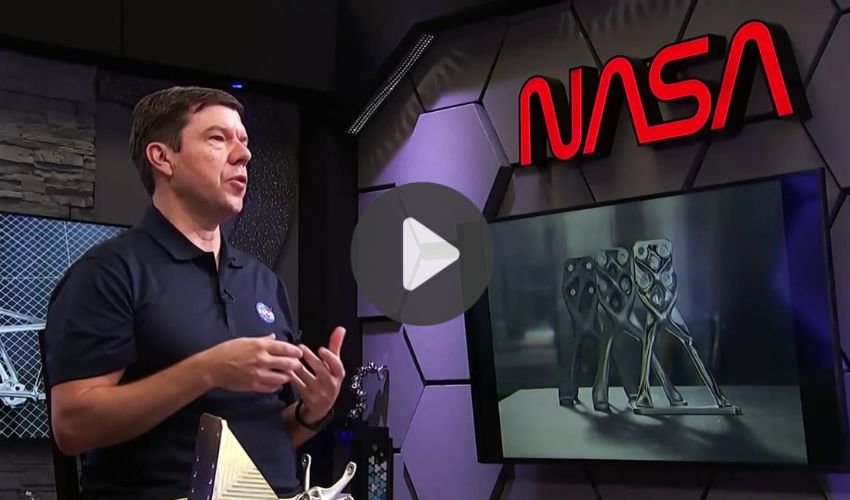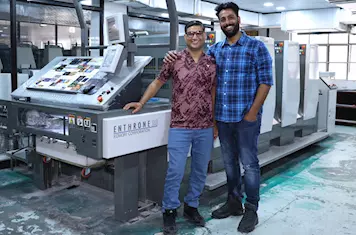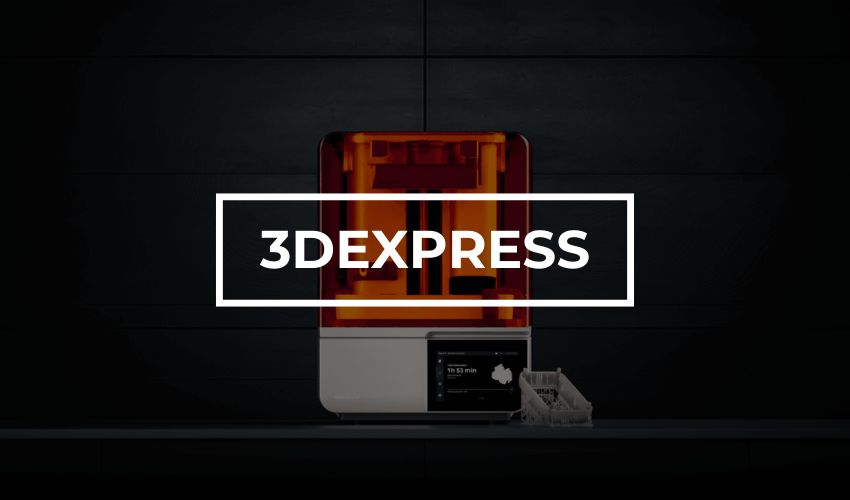Top 5 Videos: NASA Integrates A.I With 3D Printing to Design Space Parts

Today is Sunday, meaning it is time for the week’s top 5 3D printing videos! First up, don’t miss this video on NBC discussing the Artemis II moon launch, which will see humans on the moon for the first time since 1969 which also delves into how NASA integrates AI to design 3D printed parts for space! Next, a blueprint of the world’s largest underwater coral reef structure which will be 3D printed using ceramic materials. We then get into the holiday spirit by giving a behind-the scenes tutorial on how to create an Easter egg decoration. This is for anyone who wants to make something extra special for this Easter holiday. Two guides will help you learn everything about Greyscale resin, and how to design for 3D printing. Happy Sunday and, as always, happy viewing!
Top 1: NASA Engineers employ A.I. for Space Parts Design
Three Americans and one Canadian are set to land on the moon for the first time since 1969 as part of NASA’s Artemis II mission that blasts off on November 2024. However, a surprise combination of Artificial Intelligence and 3D printing has allowed NASA’s engineering team to accelerate the design process, improve the reliability and performance of space parts, and ultimately advance our ability to explore and understand the universe. An AI system that analyzes large quantities of data from rocket engines in the past can predict which designs will succeed. This allows engineers and scientists to focus their efforts on the most promising options. “As engineers, we like to think that we’re designing the best possible part, but with this toolset, we can validate that we actually are”, Ryan McClelland (NASA materials engineer) said. The ability to quickly produce physical models from their AI-generated designs and test them for form and function can be achieved using 3D printing. Rapid prototyping allows engineers to quickly identify design flaws and improve their designs more efficiently and cost-effectively. The integration of AI and 3D printing in NASA’s space mission design process represents a significant leap forward in space exploration technology – we can expect even greater future advancements as AI and 3D printing continue to evolve.
Top 2: Leviathan Printed Ceramic Reef
Our second pick is a fascinating video showcasing a concept piece of the world’s largest 3D printed ceramic structure, the Leviathan Ceramic Reef, an underwater artificial 3D printed reef designed to promote marine life growth. This project is part an exhibit that shows how ceramics can be used to create an entire reef. The Eretz Museum in Israel hosts the project as part of its design biennale. The creation of large-scale structures like the Leviathan Reef is an example of how 3D printing has changed the way we think about objects and how they are created. The process involved printing individual ceramic modules, which are then assembled into the final structure. This project’s significance lies not only in its impressive scale but also in the potential of 3D printing to revolutionize the way we make objects and structures in future. 3D printing can create complex shapes and forms that open up new avenues for engineering, architecture, art, and design. The Leviathan Reef is a shining example of the potential of technology and art interacting with design.
Top 3: 3D-Printed Easter Egg Gift Decoration
For our third favorite video of the week, we’re bringing an Easter-inspired addition to the table! Brithawkes 3D-printed Easter egg decoration can be customized and used as a gift decoration. The design features intricate patterns and shapes that are reminiscent of traditional Easter egg designs – except they’re fully 3D printed! The egg was created with a high-resolution 3D printer that allows for precise printing of intricate details. The entire printing process from the initial design phase through to the final product is shown. This demonstrates the potential of 3D printing technology for creating custom-made objects. This Easter egg gift decoration shows how 3D printers can be used to make unique and personalized gifts for every occasion. You can get in the Easter spirit by watching this tutorial:
Top 4: Formlabs Materials Explained: Greyscale Resins
Next up, take a look at Formlab’s brief-yet-informative explanation of everything you need to know about Greyscale Resins. You can learn a lot about the material, including the properties and post-processing steps. There are many uses for Greyscale Resins when printed on Formlabs SLA3D printers. The material has a matte finish and opaque appearance and fine details that can be used right out of the printer. This makes Black, White and Grey Resins a visually appealing and artistic material. Their neutral undertone makes them an ideal base for items to be painted or finished with other processes. To get further insight from the system’s principal developers on how it functions and was created, check out the video below:
Top 5: Design for Mass Production 3D Printers: Electrical Enclosures
For our last video in the Top 5 of the week, check out Slant 3D’s most recent beginner’s guide to designing 3D printed components and learn how to create a unique electrical enclosure that will be 3D printed! The following outlines all of the necessary details and design considerations for creating an ESD-safe, 3D-printed electronics enclosure. The guide will show you how to use standoffs and camfers to ensure a high-quality result.
What do you think about the integration of AI and 3D printing in order to create space parts Let us know in a comment below or on our LinkedIn, Facebook, and Twitter pages! Don’t forget to sign up for our free weekly Newsletter here, the latest 3D printing news straight to your inbox! You can also find all our videos on our YouTube channel.


